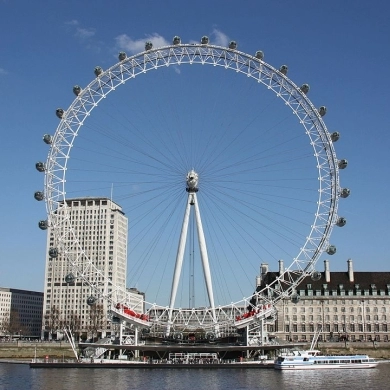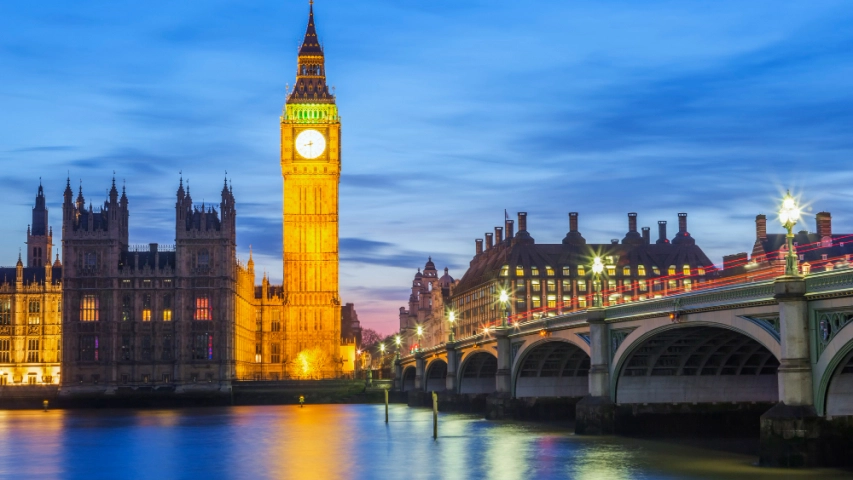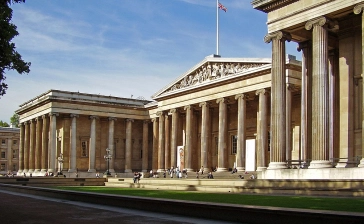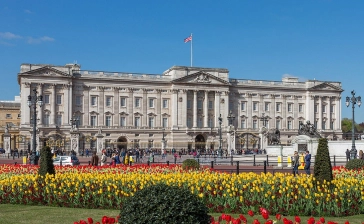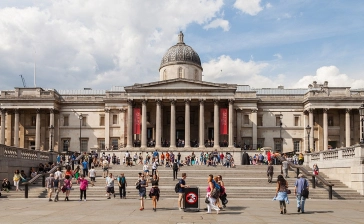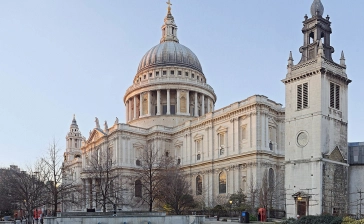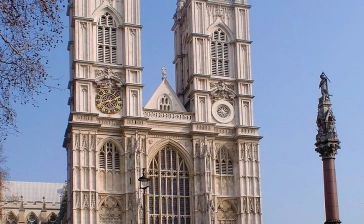London is the capital and largest city of England and the United Kingdom. It is located on the banks of the River Thames and has a population of approximately 8.5 million people. When including its metropolitan area, the population increases to over 13 million. The city was founded by the Romans under the name of Londinium about 2000 years ago and was located where the City of London is today.
As a global city, London offers a wide range of experiences, from art and entertainment, to finance and fashion, education and research, among many others. It is also the main financial center in the world, alongside New York. Furthermore, London is the most-visited cultural capital in Europe, and it has the largest airport system in the world. Additionally, with 43 universities, London is home to the most higher education centers in all of Europe.
London is a multicultural city, where over 300 languages are spoken. The city is home to four World Heritage Sites: Greenwich, Kew Botanical Garden, the Tower of London, and Westminster Abbey. Other notable landmarks and attractions in London include the London Eye, Piccadilly Circus, Saint Paul's Cathedral, Buckingham Palace, the British Museum, the British Library, Trafalgar Square, and several markets such as Portobello and Camden Town. London is also home to the oldest metro system in the world, which has been in operation for over 150 years.
In summary, London is a vibrant, diverse and cultural city that offers a lot to its visitors and residents, and it's the ideal destination for all sort of people, including wheelchair users.
Some important London facts:
- Its currency is the pound sterling
- The phone prefix is (+44)
- If you belong to the European Union, you need a valid passport with more than 6 months of validity to be able to enter England (after Brexit). Likewise, consult visa conditions in each case.
- If you do not belong to the European Union, consult visa conditions.
- The electrical voltage is 220/240 AC, 50Hz. UK electrical plugs have three rectangular pins and are fused at 3, 5 or 13 amps.
- Its time zone is Greenwich Mean Time (GMT) +0
- Its typical dishes are Fish & chips and Roast Beef
- Drive on the left (Be very careful at pedestrian crossings)
- One of the most important holidays is St. George (April 23)
From www.motion4rent.com we bring you some of the important information, places of interest and tourist offices, through the accessible beaches, to the adapted excursions, theme parks, accessible restaurants and other offers for visitors with reduced mobility. Enjoy your stay!
In London there are many tourist offices, we will show you the most important and central ones.
Victoria Station Information Point
The information point located in the Victoria train station is a convenient one-stop shop for travelers. It offers both train tickets and attraction tickets, and the staff is knowledgeable about accessibility options at various tourist spots in the city and beyond.
The station and the tourist information point are 100% accessible for people with reduced mobility and includes adapted toilets. The point helps travellers to buy tickets and gather information in a disability friendly manner.
- Victoria Train Station, opposite Platform 8 London SW1V 1JR
- Telephone: (+44) 3432221234
City of London tourist Information Point
The City of London Information Office is a great resource for travelers looking to plan their time in London. They provide free information on a wide range of London events and attractions, including brochures and information on public transport. Visitors can also purchase tickets to popular attractions, theater shows, and sightseeing tours.
The office is easily accessible for people with disabilities, with flat routes from the parking area to the entrance and easy access to the building. It is located on the south side of St. Paul's Cathedral, near the Millennium Bridge. Visitors can reach it by walking through Paternoster Square or the Cathedral gardens, and the nearest tube station is St. Paul's. This is one of the best way for visitors to gather information about London and plan their trip accordingly.
- Paul's Churchyard London EC4M 8BX
- Telephone: (+44) 020 7332 1456
- Email: visit@cityoflondon.gov.uk
Greenwich Information Point
The Greenwich Information Office is a great resource for travelers looking to explore the historic area of Greenwich, London and the United Kingdom. They provide free information on a wide range of topics, including local guides, maps and books on local history. Visitors can also book accommodation, tickets, guided tours, theater tickets and attraction passes.
The office is easily accessible for people with disabilities, with flat routes from the parking area to the entrance and easy access to the building. It is also equipped with accessible bathrooms for people with reduced mobility. This information office is a one stop shop for all kind of information that visitors might need to plan their trip in Greenwich and London.
- 2 Cutty Sark Gardens Greenwich, London SE10 9LW
- Telephone: (+44) 0870 608 2000
- Email: tic@greenwich.gov.uk
King's Cross Information Point
The King's Cross Information Point is a great resource for travelers looking to explore one of the most connected parts of London. This location is served by six tube lines and two train lines, making it a convenient hub for getting around the city. The information point offers assistance to visitors looking to make the most of their visit to London, with a particular focus on the King's Cross neighborhood. Visitors can find a small-scale model of the area that is incredibly helpful, as well as maps and guides to the area.
The information point is located on Stable Street next to the Dishoom restaurant and it's open from Monday to Saturday from 10:00 am to 5:00 pm and on Sundays from 10:00 am to 4:00 pm. This location is wheelchair accessible and includes ramps and elevators, also public restrooms are wheelchair accessible and people with reduced mobility friendly. In King's Cross neighborhood, most of the public areas are accessible for people with disabilities.
- 11 Stable Street London N1C 4AB
- Telephone: (+44) 020 3479 1795
- Mail: visitor.centre@kingscross.co.uk
Heathrow Airport Information Point
Heathrow Airport is one of the busiest airports in the world and it is fully accessible for people with reduced mobility. The airport has taken measures to ensure accessibility for all, including ramps, elevators, and adapted restrooms. The staff who work at the airport are trained to assist people with disabilities or reduced mobility, providing assistance and information on how to navigate the airport. The airport also providing wheelchair service, priority boarding and other facilities to assist.
You can find specific information at Heathrow Terminals 2 and 3, Underground Station, Wellington Road, Hounslow, Middlesex TW6 1JH. It's important to check with your airline and Heathrow in advance to inform them of your needs and to discuss any specific requirements you may have.
- Address and special contact for people with reduced mobility:
- The Compass center Nelson Street, Hounslow Middlesex, TW6 2GW
- Telephone: (+44) 344 335 1000
Piccadilly Circus Information Point
The information point located at the Piccadilly Circus tube station is a convenient location for travelers to purchase both tube tickets and attraction tickets. It's a central location and easy to access. However, it's important to note that the entrance has stairs with handrails, which may make it difficult for individuals with mobility issues or in a wheelchair to access. In such cases, it's best to check with the staff at the information point if they provide any alternative or accessible entrance and also check with London Transport Services if they have any other nearby accessible station that can assist you.
- Piccadilly Circus Underground Station London W1J 9HS
- Telephone: (+44) 3432221234
The Visitor OYSTER card is a convenient way for travelers to access London's public transportation network. With this card, you can travel at any time of the day and any day of the week throughout central London using the train, bus, and metro. It's easy to purchase an Oyster card at any London airport upon arrival and it's highly recommended if you're planning to stay in the city for a few days.
To purchase the Visitor OYSTER card, you need to pay a deposit of £5 and then add the desired amount of credit to the card. If you spend the credit, you can easily reload it and at the end of your trip, you can recover the unused balance and deposit.
London has four airports, with Heathrow being the busiest one. The other airports are Stansted, Gatwick, and Luton. Each airport may have different facilities, you can check with the airport and your airline for accessibility and assistance options when transferring from the airport to city center. It's advisable to check the different options, fare and assistance provided by London Transport services before making a decision.
HEATHROW Airport:
London Heathrow Airport (LHR) is one of the busiest and most advanced airports in the world, located 20 miles (32 km) west of the city center. It handles over 190,000 international passengers daily, making it the busiest airport in the world.
Heathrow airport has five terminals - Terminal 1, Terminal 2, Terminal 3, Terminal 4 and Terminal 5. Each terminal has its own departures and arrivals area.
The Heathrow Airport departures area is located on the ground floor of Terminals 1, 3, 4, and 5, and on the first floor of Terminal 2. This is where passengers will go through Passport Control, Passport Collection, baggage, and customs clearance.
The arrivals area is where passengers are picked up after the flight, here you'll find the baggage claim and custom clearance. The Heathrow airport arrivals area is located on the first floor of Terminal 1, the fourth and fifth floors of Terminal 2, the ground floor of Terminal 3, the second floor of Terminal 4, and the upper floor of Terminal 5. This is where passengers will collect their baggage and clear customs. It's recommended to check the specific terminal before you start your travel and plan your trip accordingly.
Traveling by train to and from Heathrow airport:
The Heathrow Express is a fast and convenient way to travel from Heathrow Airport to central London. The trains run every 15 minutes and take just 15-20 minutes to reach Paddington Station. The Heathrow Express service operates from approximately 5:00 a.m. to 11:55 p.m.
Heathrow Connect is another option for travelers looking to travel from Heathrow Airport to Paddington Station, with stops at Ealing Broadway, West Ealing, Hanwell, Southall, Hayes & Harlington, and Heathrow Central (Terminals 1, 2, and 3). For those arriving at Terminals 4 and 5, there is a free Heathrow Express shuttle service from Heathrow Central. The Heathrow Connect journey takes around 25 minutes from Paddington to Heathrow Central.
Traveling around by tube to and from Heathrow airport:
The London Underground, also known as the Tube, is a cost-effective option for travelers looking to travel from Heathrow Airport to central London and the rest of the city. However, it is important to note that many London Underground stations are not accessible, so it may not be the best option for travelers with mobility issues or in a wheelchair.
The Piccadilly line connects Heathrow airport with central London and the rest of the London Underground network. The tube is cheaper than the Heathrow Express or Heathrow Connect, but the journey is much longer. Tube trains leave Heathrow every few minutes from approximately 5:10 am (5:50 am on Sundays) until 11:45 pm (11:30 pm on Sundays). The journey time to Piccadilly Circus is around 50 minutes. At Heathrow Airport, there are three tube stations: one for Terminals 1-3, one for Terminal 4, and one for Terminal 5.
Traveling by coach to and from Heathrow airport:
Another option for travelers looking to travel from Heathrow Airport to central London is by bus or coach. Most London buses and coaches are accessible to people with reduced mobility, and there are multiple companies that operate routes between Heathrow and central London.
National Express is one such company, offering frequent services between Heathrow Central Bus Station and Victoria Coach Station. The journey time varies between 40 and 90 minutes, depending on the route. Some services stop at Hammersmith or Earl's Court. Services from Heathrow start at approximately 4:20 am and continue until 10:20 pm.
Easybus is another company that offers a bus service from Heathrow Airport Central Bus Station to Shepherd's Bush, continuing on to Waterloo Station. It's recommended to check the schedule and route of the bus service before planning your trip. It's also important to check accessibility options and facility provided by the service provider.
Traveling by bus to and from Heathrow airport:
For travelers arriving at Heathrow Airport late at night, the N9 night bus is a convenient option for getting to central London. The N9 night bus operates between 11:30 p.m. and 5:00 a.m. (depending on the day of the week) and leaves every 20 minutes for central London (Trafalgar Square). The journey time is approximately 76 minutes and Oyster cards are accepted as payment. The night bus service is an affordable and efficient way to reach central London during the hours when other public transportation options may not be available.
Traveling by taxi to and from Heathrow airport:
Taking a black taxi, also known as a "CAB," is another option for travelers looking to travel from Heathrow Airport to central London. It's important to note that all CAB black taxis are accessible to people with reduced mobility, they are equipped with ramps, wider entrance and many have wheelchair space.
There's usually a queue of taxis waiting for passengers at London airports, it's important to use only trusted and authorized CAB black taxis to ensure a safe and reliable journey. It's also a good practice to ask the driver for the estimated fare before getting in.
The fare for a metered ride in a black cab to/from central London is typically between £45 and £70 and takes around an hour. You can request the service at an accredited counter or authorized taxi rank located at all Heathrow terminals.
It's always a good idea to ask for the estimated fare, the driver's ID and the license plate number of the vehicle, and also check if the company accepts card payments. Avoid hailing an unofficial taxi or ride-sharing service. It's advisable to plan your trip in advance and check with the airport or the service provider for any special requirements or arrangements you might need.
Accessible Transport:
Heathrow Airport provides specialized assistance to passengers with special needs, including those with disabilities or mobility issues. The airport staff are trained to provide assistance with check-in, security, and boarding, and specialized equipment such as wheelchairs, mobility scooters, and walkers is available for use.
For transportation, Heathrow Express trains have designated areas for wheelchair passengers, and the departure from Paddington Station is direct. However, it's important to note that many London Underground stations do not have elevators, and this may be a challenge for disabled travelers. Almost all London bus services are equipped for wheelchair users.
The airport has dedicated staff for assisting passengers with accessibility needs. They have information points and helpdesks, located in several places including terminal concourses, car parks, Heathrow Express and London Underground stations, where you can ask for help or information on how to move around the airport. They can help you with baggage handling, check-in and boarding. Alternatively, you can call the support team directly on (+44) 020 8757 2700 (all terminals) to arrange support from your vehicle or drop-off location. You can check the Heathrow Airport Accessibility and Support page for more information.
Inside the terminal: There are special assistance areas inside the terminals located in the following areas:
- Terminal 2: before the security exits level, behind Zone C (security fence)
- Terminal 2 - After Security - Next to the Children's Playground and Gates B
- Terminal 3: Before the security checkpoint: First floor, above check-in areas A and B
- Terminal 3 - After Security - Extra Seating Area, behind World Duty Free
- Terminal 4: before security: Check-in Zone B, next to Excess Baggage
STANSTED airport:
- Train: One advantage that Stansted has is that it has a train station within the terminal itself: The Stansted Express takes you from the airport to the center (Liverpool Street) in about 45 minutes with only one stop in between. The train is adapted for people with reduced mobility.
- Bus: From Stansted airport there is an accessible bus service that leaves every 15 or 20 minutes and takes you to Victoria Station, in the very center of London. This journey takes approximately 2 hours and the bus company is National Express.
- Taxi: You can also go by taxi from Stansted to central London, but the journey has a high price and the journey time can reach an hour and a half (Depending on traffic)
GATWICK Airport:
- Train: From Gatwick Airport, you can travel by train to central London using the Gatwick Express or the First Capital Connect services. Both trains have access for people with reduced mobility, and the Gatwick station staff will assist you throughout the journey. The journey time is around 30 to 40 minutes, and all the stops from the airport to the center are accessible. The toilets on the trains are also accessible.
- Bus: This airport also has a fully adapted bus service for people with reduced mobility. The company is National Express and its departure frequency is every 30 minutes. This bus also has Victoria Station as its final destination, in the center of London, but it makes several stops before arriving. This bus takes 2.5 hours from the airport to Victoria Station.
- Taxi: You can travel from Gatwick to the city center by taxi, but this takes about an hour and the fare can be relatively high. It's recommended to book in advance and check the accessibility of the vehicle before starting the trip. It is also a good idea to ask for the estimated fare and check if the company accepts card payments.
It's important to keep in mind that the transportation options and schedules may change, and it's always best to check and verify with the providers or the airport before planning your trip.
LUTON airport:
- Train: From Luton Airport, there are two companies that operate train services to central London, East Midlands Trains and First Capital Connect. The trains arrive at the St Pancras International station, which is in the center of the city or London Bridge station. The duration of the journey is around 30 to 50 minutes, depending on the intermediate stops. Both Luton train station and both train companies have accessible carriages for people with reduced mobility.
- Bus: Thameslink and Terravision operate bus services from Luton Airport to central London and both have seats and access adapted for people with reduced mobility. The frequency is about every 20 minutes and it takes approximately 1 hour and 15 minutes to reach Victoria Station.
- Taxi: The last option is to travel by licensed black taxi, but this option can be expensive and slower due to traffic, it can take up to 2 hours and the fare can reach £180. It's recommended to book in advance and check the accessibility of the vehicle before starting the trip. It is also a good idea to ask for the estimated fare and check if the company accepts card payments.
Metro:
You should also know that not all tube stations have step-free access, and you can check the accessibility of each station on the Transport for London (TFL) website before you travel. You can check the website https://tfl.gov.uk/transport-accessibility/wheelchair-access-and-avoiding-stairs to check which stations have step-free access, elevators and escalators available. Additionally, many London Underground stations now have tactile paving, which helps visually impaired travelers navigate the stations.
When travelling on the Underground, staff members have received special training to assist passengers with reduced mobility and can help you board the train, find a suitable seat and notify the destination station to ensure that further assistance is provided if necessary. All trains have designated seating areas for passengers with mobility needs, and there are spaces next to the doors for travelers using wheelchairs.
In summary, while not all London Underground stations are fully accessible, there are a number of measures in place to make travelling by tube as easy and convenient as possible for passengers with reduced mobility. By checking the accessibility of the stations, plan your route and getting help from staff members, you can have a smooth and hassle-free travel.
Local trains:
The larger London train stations such as Victoria Station or King's Cross St Pancras have good accessibility for people with reduced mobility, with ramps, elevators and designated seating areas.
Docklands Light Railway (DLR) is fully accessible to passengers with reduced mobility. As you mention, All DLR stations have lifts or platform access ramps, the gap between the platform and the train is 7.5 cm wide and the platform step is 5 cm with the that the best way to access or get off the train is doing it backwards so that the rear wheel (the big one) is the first.
It's also worth noting that London Overground train service is also fully accessible, with all of their stations and trains having step-free access, and each train having a designated wheelchair space.
Overall, while some of the smaller train stations in London may have accessibility challenges, but with the help of the staff and information provided by TFL, you will be able to navigate around London with your wheelchair with ease.
Bus:
London buses are generally accessible for people with reduced mobility, as most buses have low-floor entry and a wheelchair ramp. However, it's worth noting that some older buses, specifically route 9 and 15, do not have these features and therefore may not be as easily accessible. As you mentioned, all buses in London have designated wheelchair spaces, which is located near the middle doors, and once onboard the bus, you will have to press the button for the driver to stop the bus and use the ramp.
All London buses are equipped with audio and visual announcements of the next stop, and most of them have an electronic display of the next stop.
Wheelchair users and their companions are eligible for free travel on London buses, but they are required to show proof of eligibility.
Touristic bus:
The open-top bus tour is a popular and accessible way to explore the city. With the hop-on, hop-off feature, visitors can easily get on and off at various points of interest and explore the city at their own pace. This can be especially helpful for those with mobility issues, as they can avoid the need to navigate complex public transportation systems or walk long distances. Additionally, the buses are typically equipped with ramps or lifts to make it easy for wheelchair users to board and disembark. Some of the tour companies also offer audio guides in different languages and these buses usually also have a space for wheelchairs.
Taxis:
It is worth noting that in London, all licensed black cabs (often referred to as "London cabs") are required to be wheelchair accessible, and must have a ramp or lift for use by passengers in wheelchairs. Additionally, taxi drivers are trained to assist passengers with disabilities, so you can expect good service when using this mode of transport. While it is true that taking a taxi in London can be more expensive than using public transportation, it does offer the convenience of door-to-door service, and the peace of mind that comes with knowing the vehicle is accessible for your needs.
HYDE PARK
Hyde Park is a must-visit destination for those traveling to London. It is the largest of the four royal parks in London and is accessible to people with reduced mobility. Spanning 142 hectares, the park offers visitors the opportunity to relax while walking, admire the fountain in memory of Princess Diana, enjoy the park's incredible trees and flowers, or participate in the debates that take place in Speakers' Corner.
Located in the northeast corner of the park, near Marble Arch, Speakers' Corner is a designated area where anyone can climb on a box and speak on any topic they choose, while passersby can engage in debate with the speaker. The park is open from 5:00 am to 12:00 am every day and admission is free.
In addition, a free shuttle service for people with disabilities is available in both Hyde Park and Kensington Gardens. This service is provided by Liberty Drives and features electric strollers with a capacity for five passengers, one passenger in a wheelchair, and the option for a guided tour of the park lasting between 30 and 45 minutes. Pick-ups are typically done at the main entrance of the park, and passengers can request to be dropped off anywhere within the park. The service operates from May 1st to October 31st, Monday through Friday, between 10:00 am and 4:30 pm.
- We leave you the contact information of this company:
Accessibility:
The park is huge and has many different entrances, so depending on where you enter there will be different meters or buses.
Metro: There are five tube stations located in and around Hyde Park.
- Hyde Park Corner (Piccadilly Line)
- Kinghtsbride (Piccadilly line)
- Queensway (Central Line)
- Lancaster gate (Central Line)
- Marble Arch (Central Line)
Bus: We give you some bus numbers that arrive at Hyde Park Corner: 2, 13, 16, 36, 38, 52, 148, 390, N2, N16, N38
- Address and contact:
- The park has 4 main entrances, located at Lancaster Gate, Marble Arch, Hyde Park Corner and Knightsbridge.
- Telephone: (+44) 03000612000
SOHO NEIGHBORHOOD
The Soho neighborhood in London is a must-see destination for visitors. Located near Piccadilly Circus, it covers approximately one square mile and is bordered by Oxford Street to the north, Regent Street to the west, Shaftesbury Avenue to the south, and Charing Cross Road to the east. Soho is a popular destination for Londoners to spend their free time, with a wide variety of restaurants, pubs, jazz clubs such as the historic Ronnie Scott's, clothing stores, record stores such as Black Market Records or Vinyl Junkies, and sex shops. Additionally, the neighborhood is home to many theaters and cinemas on Shaftesbury Avenue.
While Soho is easily navigable in a wheelchair, it's worth noting that some restaurants and pubs have entrances with stairs that may not be accessible for people with reduced mobility. One notable street in Soho is Carnaby Street, known for its top brand clothing stores and unique small stores, and for its spectacular Christmas decorations.
Another place to visit in Soho is Soho Square, which while not particularly noteworthy, is worth a visit for its open-air shows and concerts in the summer and the charming houses that surround the square.
NOTTING HILL
Notting Hill is a neighborhood located in the west of London, made famous by the movie of the same name. It is a neighborhood full of markets, restaurants and colorful houses, making it a must-see destination for visitors to London.
One of the most well-known markets in Notting Hill is Portobello Market, which is best visited on a Saturday morning when the atmosphere is at its peak. Here, you can find street vendors selling a wide variety of items, from trinkets to authentic vintage items such as old records, coins, stamps, second-hand clothes and souvenirs.
Another highlight of Portobello is its Carnival, which takes place on the last weekend of August and features a variety of parades. If your visit coincides with this event, it is not to be missed as it is one of the most colorful and well-known carnivals in the world.
Notting Hill is also known for its diverse array of restaurants, where you can taste both traditional English cuisine and dishes from around the world, thanks to the mix of races and cultures in the area. (Mostly Portobello is of Caribbean descent)
There are many options to get to Notting Hill, including the metro stops Holland Park, Notting Hill Gate, and Latimer Rd, and by bus, with important lines such as 27, 28, 52, 328, 452, and N27.
Restaurant Story: https://restaurantstory.co.uk/
This Michelin-starred and award-winning restaurant located near London Bridge in SE1 serves a comprehensive tasting menu of seasonal British cuisine. It is an excellent choice for special occasions and makes for a great gift to share with a partner or friends. The restaurant is fully accessible and the staff is trained to assist customers at all times.
Accessibility
- The dining room is located on the ground floor. There is a gate to the main entrance, but there is always a host available to help. The other door is automatic.
- There is a toilet for the disabled on the ground floor with the necessary security elements installed and an emergency cordon.
This restaurant is open from Wednesday to Saturday for both lunch and dinner.
Address and contact:
- 199 Tooley Street, London, SE1 2JX
- Telephone: 0207 183 2117
- Email: dine@restaurantstory.co.uk
Quilon Restaurant: http://www.quilon.co.uk/
This Michelin-starred Indian cuisine restaurant is very close to Buckingham Palace and its cuisine incorporates a unique combination of ethnic and progressive dishes with seafood at its core, but also offers meat, poultry and vegetarian dishes, mostly designed for share, but you can also opt for a tasting menu.
Accessibility
- They have an access ramp for customers with wheelchairs
- The bathrooms are on the same floor.
- The staff provides assistance with any guest requirements.
Quilon is conveniently located just steps away from Buckingham Palace and St. James' Park, and is just around the corner from St. James' Park Tube Station. This location provides easy access to airports and national rail gateways through nearby St. James's Park and Victoria stations.
For those traveling by car, please note that the congestion charge is in effect Monday through Friday between 7:00 am and 10:00 am and 4:00 pm to 7:00 pm. For more information on the congestion charge, visit www.cclondon.com.
Address and contact:
- 41 Buckingham Gate, London SW1E 6AF
- Phone +44 2078211899
Hawksmoor Seven Dials Restaurant: https://thehawksmoor.com/locations/seven-dials/
This chain of restaurants has locations around the world, and in London, we recommend visiting the Seven Dials branch. Located in the historic Watney-Combe brewery, it is nestled in a quiet street just a short walk from Covent Garden station and Seven Dials. They are known for their specialty meats, with their Roast Beef being a particular favorite among customers.
Accessibility:
- Hawksmoor Seven Dials is fully accessible to wheelchair users and has a 100% accessible bathroom for people with reduced mobility.
- Nearest parking: NCP Covent Garden, Parker Mews, Holborn, WC2B 5NT
- Nearest metro stations: Covent Garden and Leicester square
Address and contact:
- 11 Langley Street London WC2H 9JG
- Telephone (+44) 020 7420 9390
